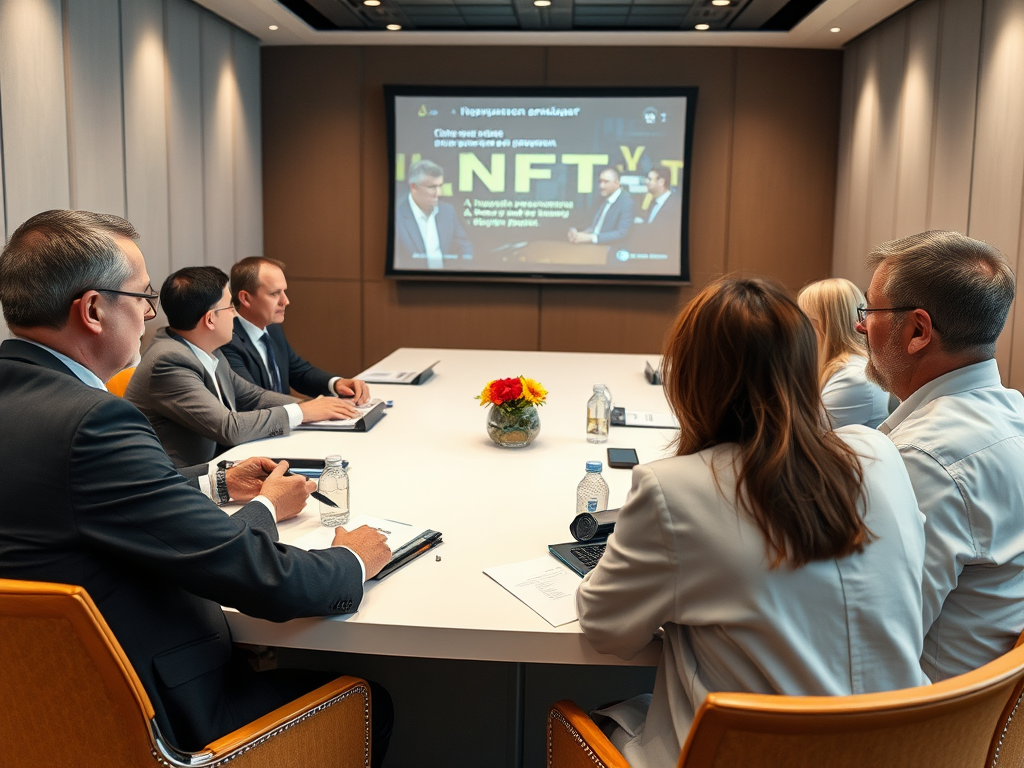The rise of Non-Fungible Tokens (NFTs) has created a buzz that resonates far beyond the digital art galleries where it all began. These unique digital assets are redefining how brands engage with their customers, presenting opportunities that go beyond mere gimmickry. From offering exclusive content to creating immersive brand experiences, NFTs are poised to become a cornerstone of innovative marketing strategies. This exploration will delve into the transformative potential NFTs hold for brands, shedding light on their applications and benefits while addressing the challenges that come with integrating them into marketing frameworks.
Understanding the true value of NFTs in the marketing landscape requires a closer look at their mechanics and implications. NFTs are built on blockchain technology, ensuring that each token is one-of-a-kind and verifiable, giving brands an unprecedented level of control over their digital assets. The enthusiasm around NFTs extends to various sectors, with brands leveraging them to deepen consumer connections and create a frenzy of excitement among their audiences. Yet, as we dive deeper, it becomes essential to dissect whether the hype surrounding NFTs is genuinely reflective of their long-lasting impact in marketing or if it’s merely a passing trend.
Understanding NFTs in the Marketing Landscape

Incorporating NFTs into marketing strategies is more than just jumping on a trending bandwagon. Brands have begun exploring creative ways to amplify their reach and connect with audiences on a deeper level. From limited-time collectibles to exclusive experiences, the marketing potential of NFTs is vast. Companies are no longer confined to traditional advertising methods but are integrating cutting-edge technologies that resonate with tech-savvy consumers. Marketers who adapt swiftly can cultivate brand loyalty and establish their presence in a saturated market.
Strategies embedding NFTs into marketing efforts often focus on driving engagement through exclusive offerings. Brands can create unique experiences for their customers, such as access to virtual events or partnerships with renowned artists. Leveraging such unique assets fosters a sense of community while enhancing brand visibility. While this approach has garnered significant attention, the results depend on how brands execute their strategies and align them with customer values.
The Value Proposition of NFTs for Brands

What makes NFTs appealing to brands in a crowded marketplace? There are several compelling reasons that can drive companies to embrace NFTs as part of their marketing strategy. The first and foremost is the potential to build robust brand loyalty. NFTs enable brands to offer distinct loyalty rewards that can enhance the consumer experience and create deeper emotional connections.
- Exclusive Rewards: Brands can introduce limited-edition NFTs that consumers can earn through purchases or engagement, creating a sense of exclusivity.
- Community Engagement: NFTs can serve as a ticket to community events or discussions that make customers feel like they are part of a select group.
- Access to Unique Content: Offering NFT holders early access to new products or exclusive content can drive additional consumer interest.
Additionally, the nature of NFTs allows brands to capitalize on exclusivity and scarcity. By releasing a limited number of digital assets, companies can build anticipation and drive demand, creating a unique value that traditional marketing methods may lack. Enhanced customer interactions through NFTs can also lead to novel marketing approaches. For instance, brands can provide personalized digital products that reflect the individual tastes and preferences of their consumers, elevating satisfaction and retention rates.
| Feature | Benefit |
|---|---|
| Scarcity | Creates demand through limited availability. |
| Ownership | Gives consumers a sense of personal investment in the brand. |
| Unique Experiences | Enhances customer interactions and satisfaction. |
Case Studies: Successful NFT Marketing Campaigns
Examining real-world examples provides insight into how brands are harnessing the potential of NFTs. Companies like Nike and Taco Bell have launched campaigns that not only garnered attention but also showcased innovative strategies in action. Nike released limited-edition NFT sneakers, allowing collectors to own a piece of footwear history, while Taco Bell offered NFT art, generating funding for charity initiatives and bringing a fun element to their promotional efforts.
- Nike: Introduced limited-edition NFT sneakers, creating a new revenue stream and engaging collectors.
- Taco Bell: Auctioned NFT art and donated proceeds to charity, reinforcing their brand identity with a charitable twist.
- Game Companies: Many gaming companies are creating NFTs representing in-game items, leading to additional revenue through virtual economies.
The Challenges of Implementing NFTs in Marketing
Despite the enticing advantages, brands need to consider the challenges associated with integrating NFTs into their marketing strategies. Technical barriers can pose significant hurdles for companies unfamiliar with blockchain technologies. The learning curve is steep, making it essential for brands to either invest in knowledge or collaborate with experts within the space to navigate this terrain successfully.
Additionally, the environmental concerns surrounding the energy consumption associated with blockchain transactions remain a critical point of discussion. Many consumers are becoming increasingly eco-conscious, and brands must tackle this dilemma head-on or risk backlash against the sustainability of their marketing efforts. Furthermore, the market volatility of NFTs can pose another challenge, as fluctuations in value can impact overall marketing strategies. Companies must account for these risks in their planning to ensure sustainability.
Future of NFTs in Marketing
Looking ahead, the future of NFTs in marketing appears promising but will require continuous evolution. Emerging trends indicate an increasing integration of immersive technologies such as augmented reality (AR) and virtual reality (VR) with NFTs, creating multifaceted experiences for consumers. As brands experiment with these technologies, they will likely redefine what consumer experiences look like in the digital space.
Moreover, new blockchain platforms and marketplaces are emerging, potentially streamlining the NFT creation and management processes for brands. This evolution could lower the barriers previously faced by marketers, making NFTs more accessible. As innovations continue to emerge, brands must remain agile, ready to adapt strategies aligning with consumer expectations toward sustainability and digital engagement.
Conclusion
In conclusion, NFTs represent a unique intersection of technology and marketing that holds substantial potential for brands willing to think outside the box. While they provide exciting opportunities to engage consumers in innovative ways, the journey also presents challenges that must be thoughtfully navigated. Brands that embrace NFT strategies and align them with customer values can cultivate deeper connections and flourish in an ever-evolving landscape. The hype surrounding NFTs may not wane anytime soon, and the most forward-thinking companies will strategically incorporate them into their marketing approaches.
Frequently Asked Questions
- What are NFTs? NFTs, or Non-Fungible Tokens, are unique digital assets verified using blockchain technology.
- Why should brands consider using NFTs? Brands can leverage NFTs to create unique customer experiences, build loyalty, and offer limited edition products.
- What are some examples of successful NFT marketing? Brands like Nike and Taco Bell have launched successful campaigns featuring NFTs.
- Are NFTs environmentally friendly? There are concerns about the environmental impact due to the energy consumption of blockchain transactions.
- How can a brand get started with NFTs? Brands should start by understanding the technology, setting clear goals, and engaging with NFT marketplaces to explore options.

